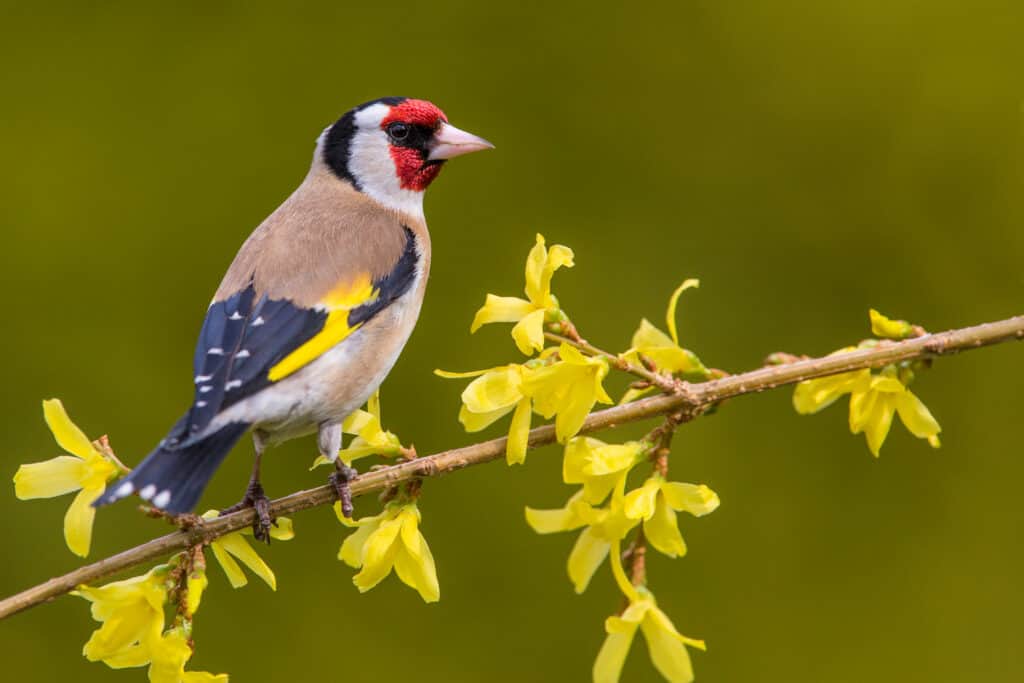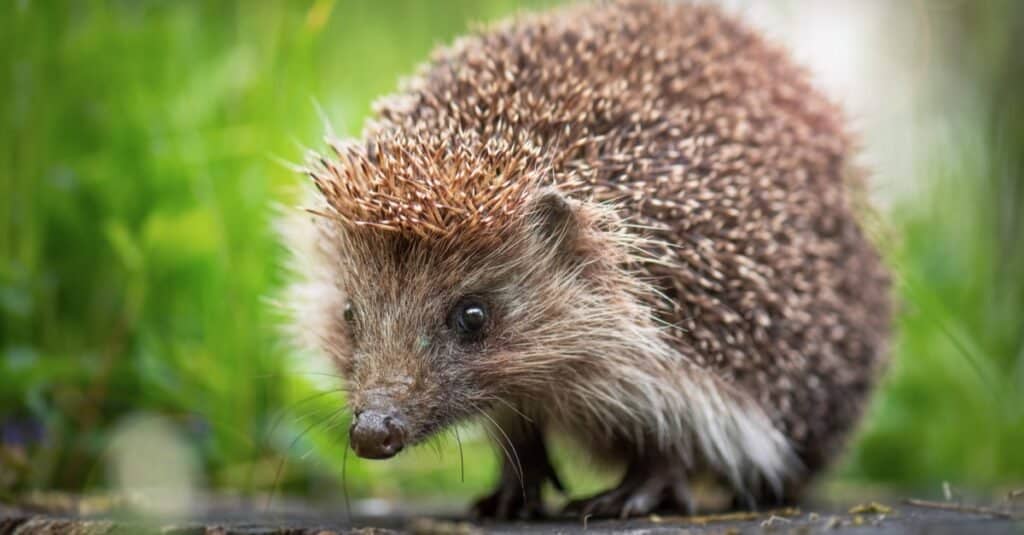Belgium is officially called the Kingdom of Belgium. Located in western Europe near Germany, Belgium has a total area of 11,787 square miles and is home to nearly 12 million people. Belgium has several large rivers, making it a center of shipping and commerce.
Several different regions in Belgium are quite different from one another. You can see coastal plains, fertile valleys, thickly forested hills, and rocky plateaus and caves.
Plants of Belgium

Lily-of-the-valley is one of Belgium’s native plants.
©Viacheslav Rubel/Shutterstock.com
There are many other native plants found growing in Belgium. These include species such as wild arum, hyacinths, and strawberries. You can see goldenrod and lily-of-the-valley, which are all typical of temperate climates. On sunny hillsides, large patches of digitalis grow wild. In terms of trees, beech, and oak are the most common species. These trees’ hardy trunks and branches can be seen across much of Belgium’s landscape, providing a canopy for its rich flora. Perhaps one of the most revered plants, however, is the national flower of Belgium.
National Flower of Belgium

The red poppy is the unofficial national flower of Belgium.
©Yuriy Kulik/Shutterstock.com
The red poppy (papaver rhoeas) is deeply associated with Belgium due to its important role in the country’s history and is widely accepted as the unofficial national flower of Belgium. The flower’s vibrant red color and iconic shape symbolize resilience and hope for many Belgians.
Belgians have used this flower during times of hardship, grief, or celebration. During World War I, the red poppy represented the remembrance of fallen soldiers who fought bravely in battle and grew spontaneously on battlefields. The red poppy continues to inspire today, reminding people everywhere that despite all odds, we can still come together in peace and harmony.
Poppies of Flanders Field
The fields of poppies in Flanders Field became a symbol of hope and remembrance for those who witnessed the war firsthand. During World War I, thousands of soldiers wrote home describing their experience with the brilliant red flowers. In letters to family and friends back home, they described how no man’s land was “afire” with scarlet poppies. The sight gave them some solace from the pain and destruction surrounding them on all sides during this time of conflict. As such, these poppies have come to represent not only the bravery and sacrifice of those who fought in WWI but also a reminder that peace is possible even after tragedy strikes. Today, Belgium has adopted the Red Poppy as its national flower as an everlasting tribute to what so many endured during wartime.
What is a Red Poppy?
A red poppy is a species of flowering plant in the family of Papaveraceae. It grows to a height of 12-24 inches and features bright red petals with a black center that can be up to 1 inch across. The leaves of the plant are irregularly lobed and have slightly fringed edges. Red poppies grow best in full sun and well-drained soil, though they are tolerant of many different kinds of growing conditions. They bloom from late spring through early summer, providing beautiful colors for garden beds or flower bouquets.
The red poppy is a wildflower native to Europe and western Asia. The flower’s petals are most often red, but varieties exist that are pink or white in color. The center of the flower and the seeds are black.
History and Myths
The red poppy has a long and storied history that dates back to the early days of civilization. Archaeologists exploring a cave in Spain in 1935 found baskets of poppy capsules laid beside human remains dating back to 4000 BC, indicating that people used them as part of ancient rituals. On a 3,000-year-old statue from Minoan Crete, a Poppy Goddess statue wears an opium poppy headdress, showing its importance within their culture.
According to classical Greek myths, poppies flowered along the banks of the River Lethe, which flowed directly into Hades, where souls were required to drink from its waters to forget their life on earth before entering eternity. Its petals are the color of blood, symbolic of war and loss in many cultures throughout history. And among other uses, it is also known as a source of morphine, a powerful painkiller used by soldiers in times of war to make physical agonies more tolerable.
How to Grow the National Flower of Belgium
Cultivating a red poppy is fairly simple and takes only some basic steps. Find a spot with lots of sun and soil that drains well. Plant the seeds in the ground or pots after the final frost of spring passes. Soil should be kept damp but not soggy to avoid decay. Water frequently and fertilize every two weeks until it produces vibrant red flowers. To have the best outcome, remove the wilted blooms regularly during summer to encourage more flowers.
Other Uses
Papaver somniferum, a type of poppy, is the source of opium that many people have used for medicinal purposes for centuries. The edible seeds of this plant are a source of oil, carbohydrates, calcium, and protein and can be used in cooking or salad dressings or added to spices for baking. You can also find poppy oil in various products, such as paints, varnishes, and cosmetics.
Gardeners around the world have found a variety of poppies to be attractive and are cultivating them in their gardens. The Shirley poppy (a cultivar of Papaver rhoeas) and semi-double or double forms of the opium poppy (Papaver somniferum) and oriental poppies (Papaver orientale) are some of the most popular varieties.
Where Do Red Poppies Come From?
The Red Poppy, or Papaver somniferum, has a lengthy and varied history. Many believe the native inhabitants of Central and Western Europe domesticated the poppy between 6000 and 3500 BC, but it might have originated from the Sumerian people earlier. The poppy was spread to different parts of the world along with silk through the Silk Road. Ancient Egyptian jewelry makers used poppies as early as 1550-1292 BC!
What Animals Eat Red Poppies?

The goldfinch is among the birds that love the national flower of Belgium.
©godiphoto/Shutterstock.com
The red poppy is a popular treat for a variety of creatures. Finches, sparrows, pigeons, goldfinches, and chickadees are all attracted to their small black seeds, which they enjoy snacking on. When food is sparse, mammals like deer and rabbits will feast on the poppy plants if available.
The bright red poppies also serve as an important food source for pollinators like bees and hoverflies due to their plentiful and accessible pollen. Planting them in our gardens can help provide local wildlife with valuable nutrition while still offering us a beautiful sight!
Wildlife

Belgium’s wildlife includes hedgehogs.
©DenisNata/Shutterstock.com
Belgium is home to a diverse range of wildlife, including several species of mammals. Wild boars, badgers, squirrels, foxes, weasels, hedgehogs, and martens populate forests and woodlands.
Many other animals, such as deer and hares, also find shelter in Belgium’s national parks. Birds like owls can also be spotted within the country’s forests, while bats make cozy homes in caves. The waterways are teaming with fish ranging from carp to trout, while amphibians like frogs and newts inhabit the wetlands across Belgium. Overall, this small nation holds vast amounts of natural beauty!
Wild Flowers
Belgium is home to a variety of wildflowers throughout the country. The most common native species include daisies, buttercups, dandelions, violets, bluebells, and primroses. It’s easy to find the national flower of Belgium in fields and on roadsides across the country during late spring and early summer. Other flowers, such as cornflowers, sunflowers, and lilies, are also commonly found in Belgium’s countryside. With its wide variety of beautiful wildflowers, Belgium is an excellent destination for nature lovers looking to explore some unique flora.
NEXT UP…
- The Flag of Belgium: History, Meaning, and Symbolism
- Belgian Malinois vs Belgian Shepherd: What Are The Differences?
- 10 Red Annual Flowers: Vibrant Showstoppers
The photo featured at the top of this post is © Yuriy Kulik/Shutterstock.com
Thank you for reading! Have some feedback for us? Contact the AZ Animals editorial team.






